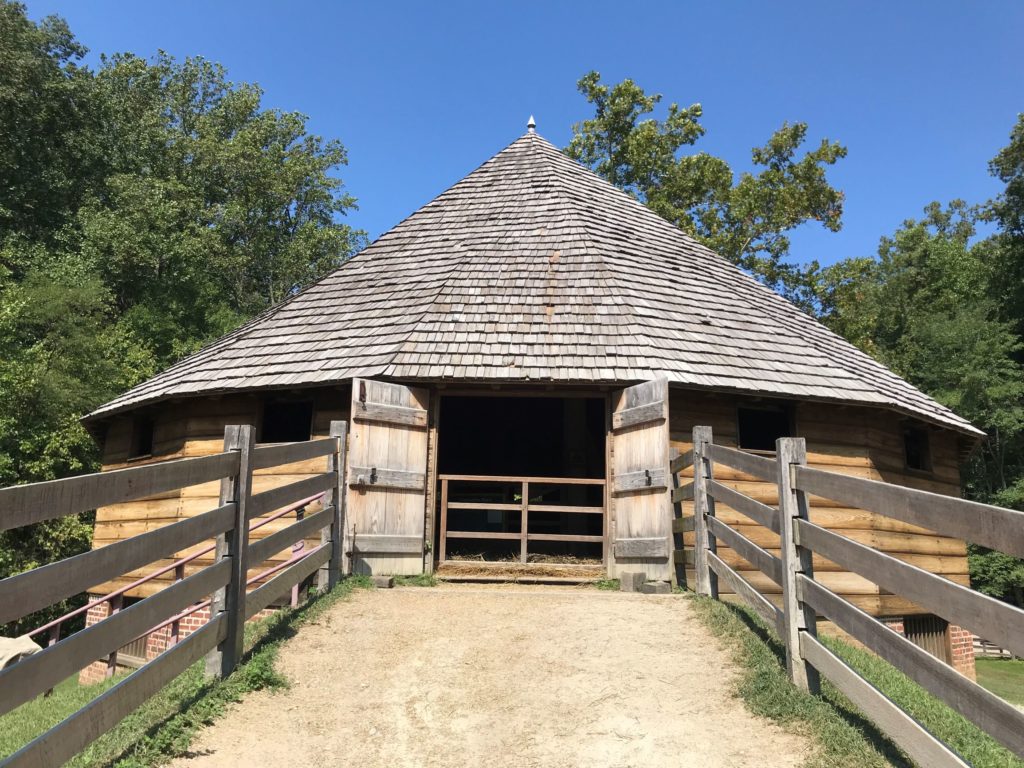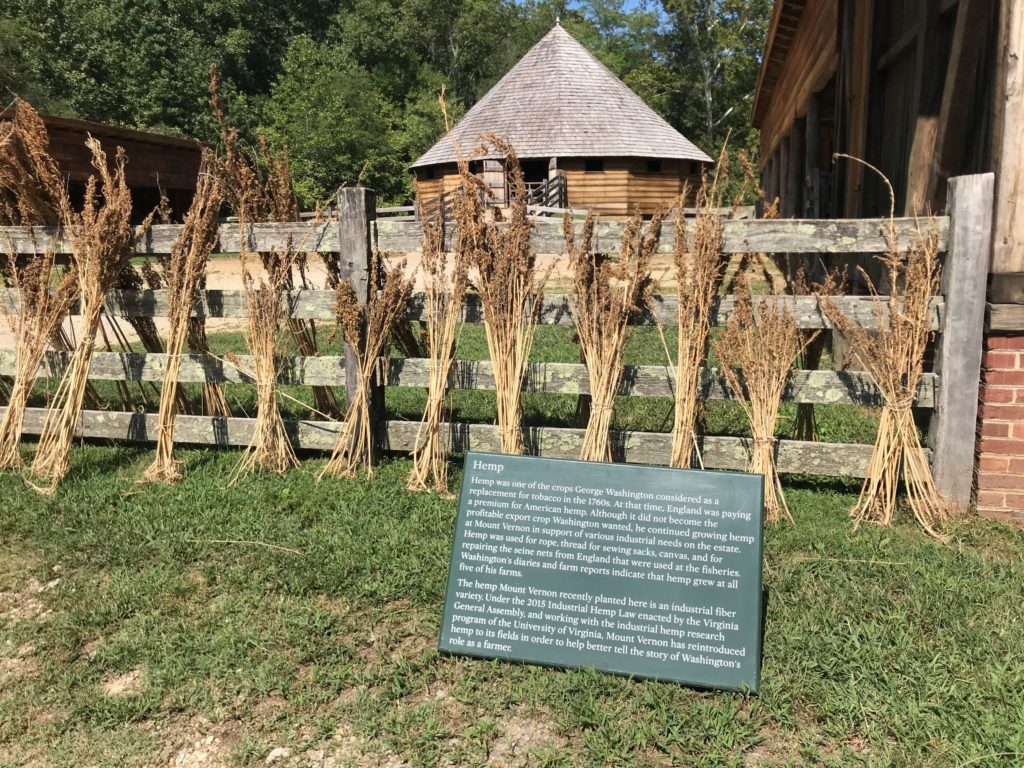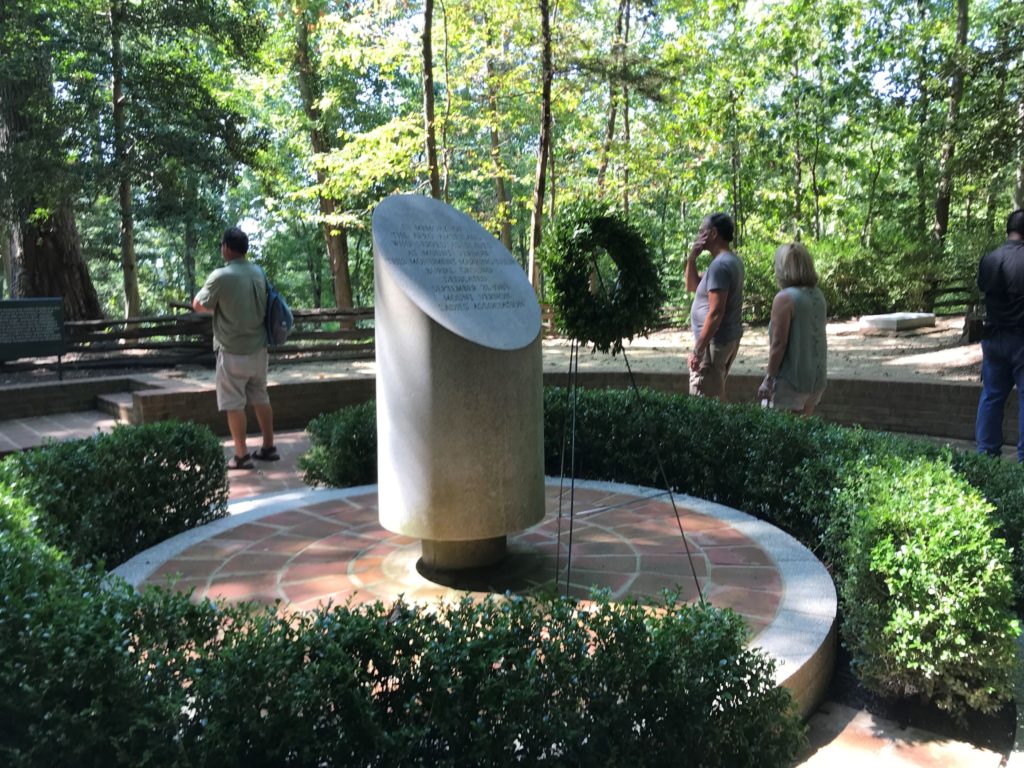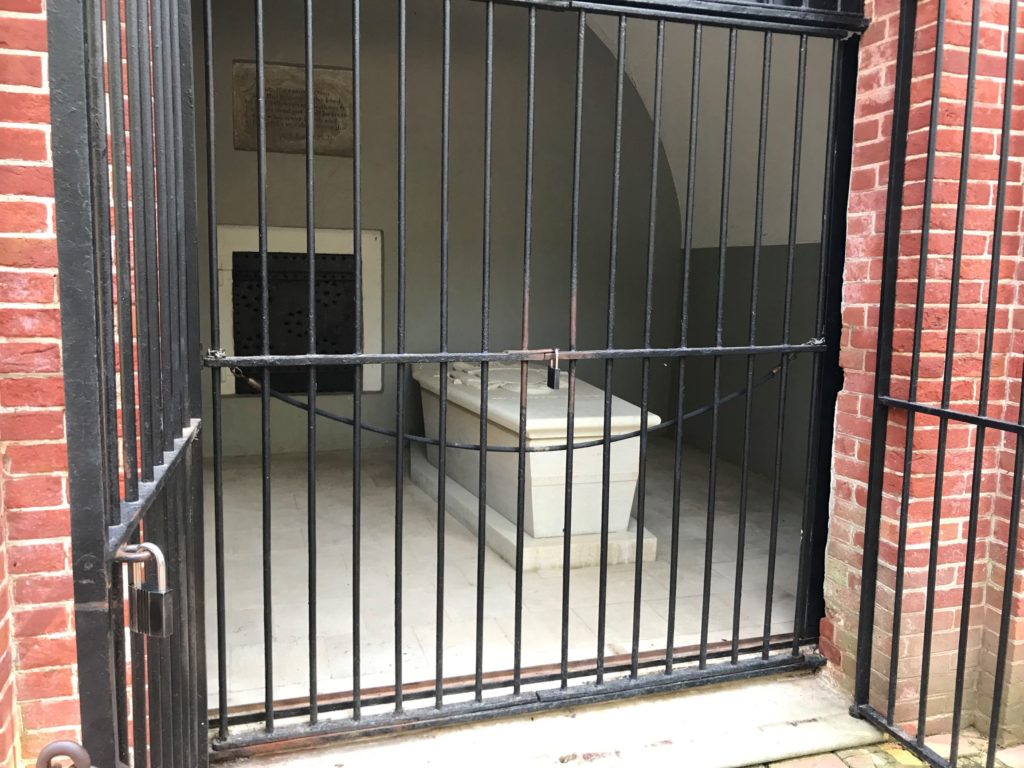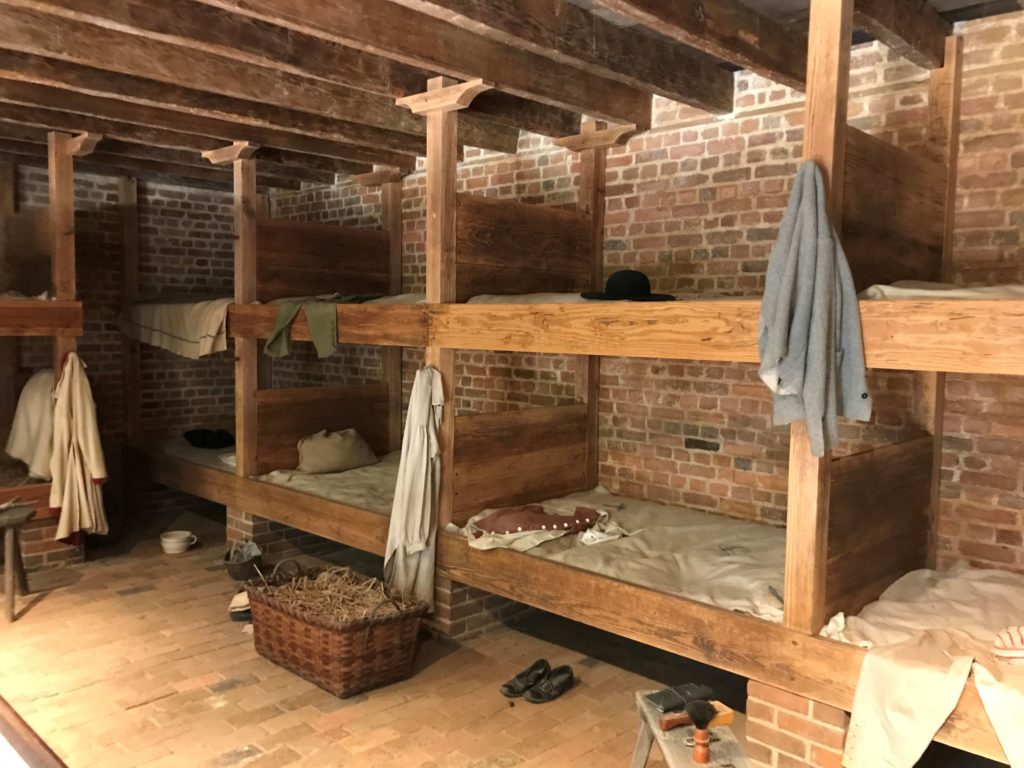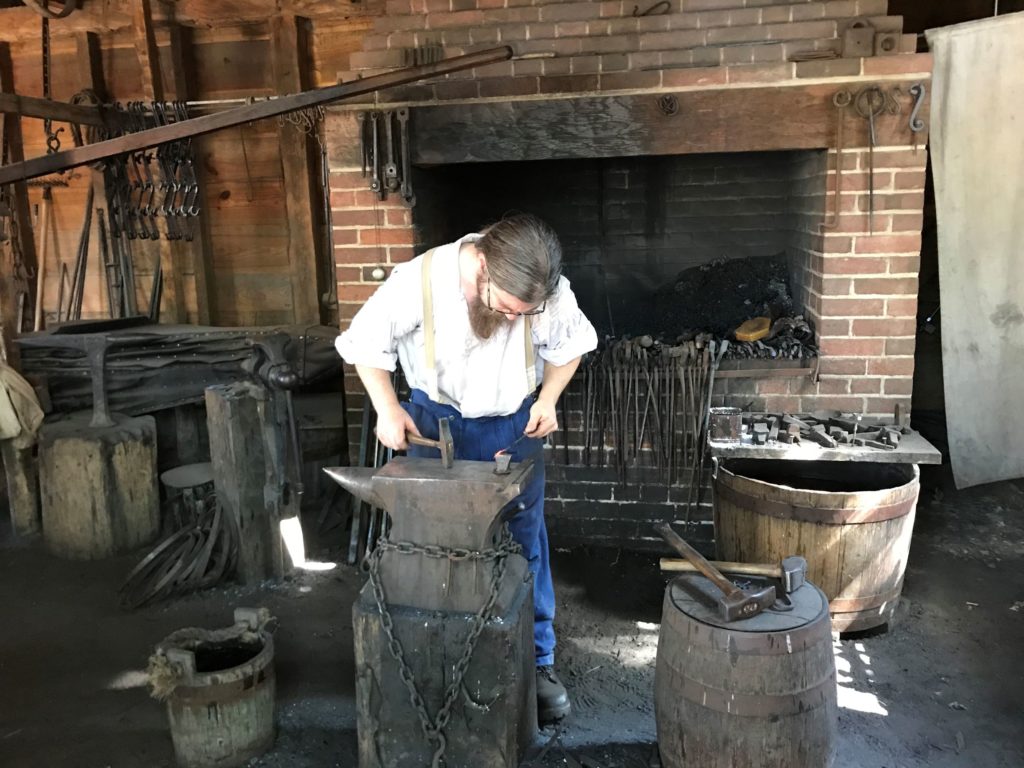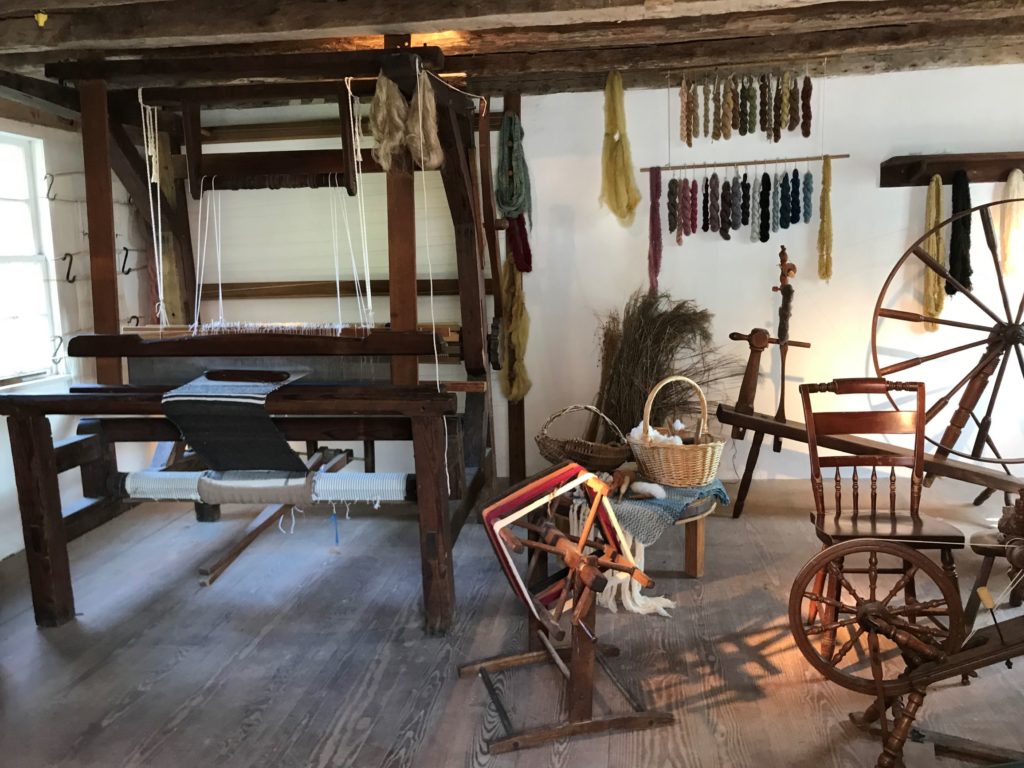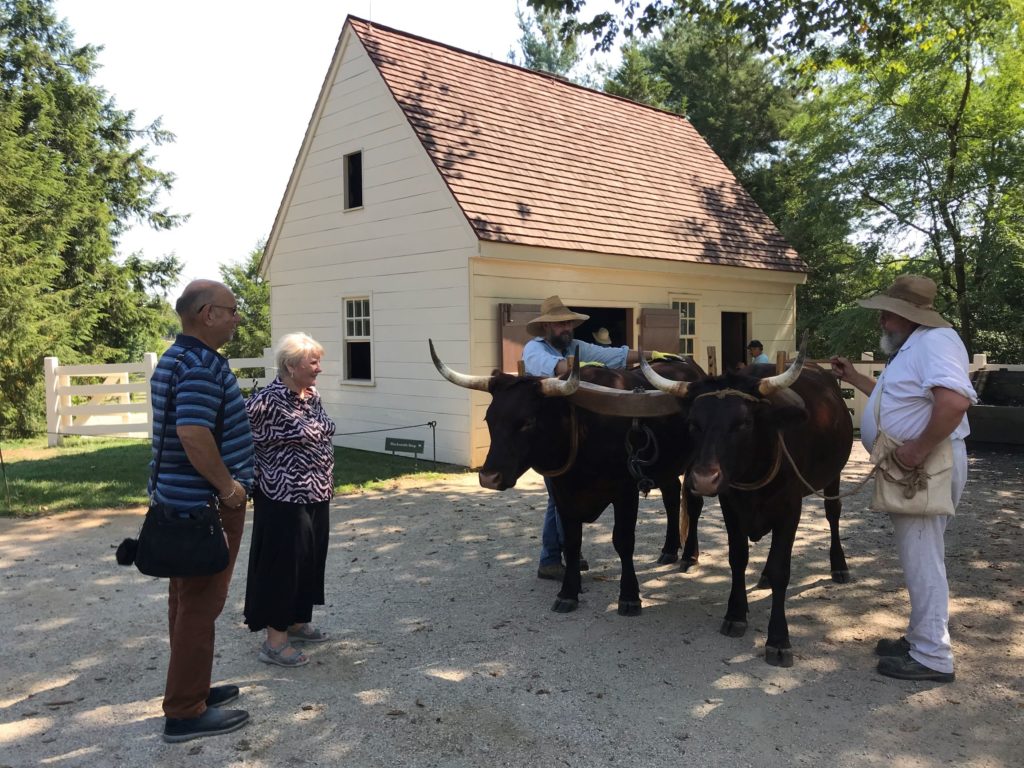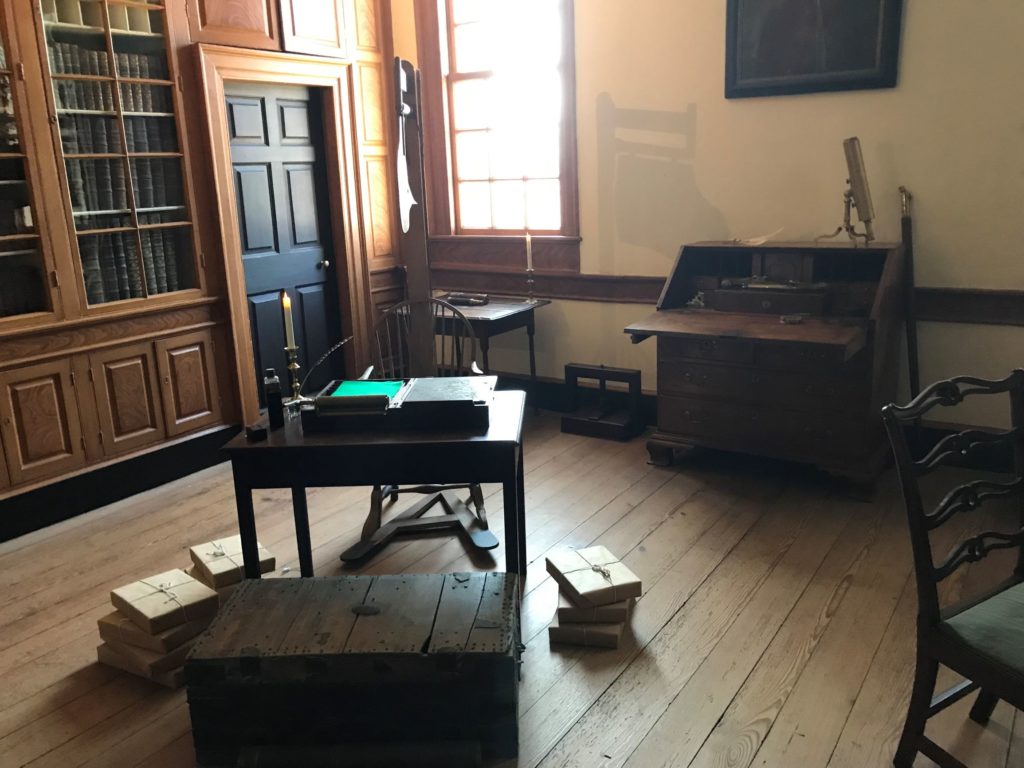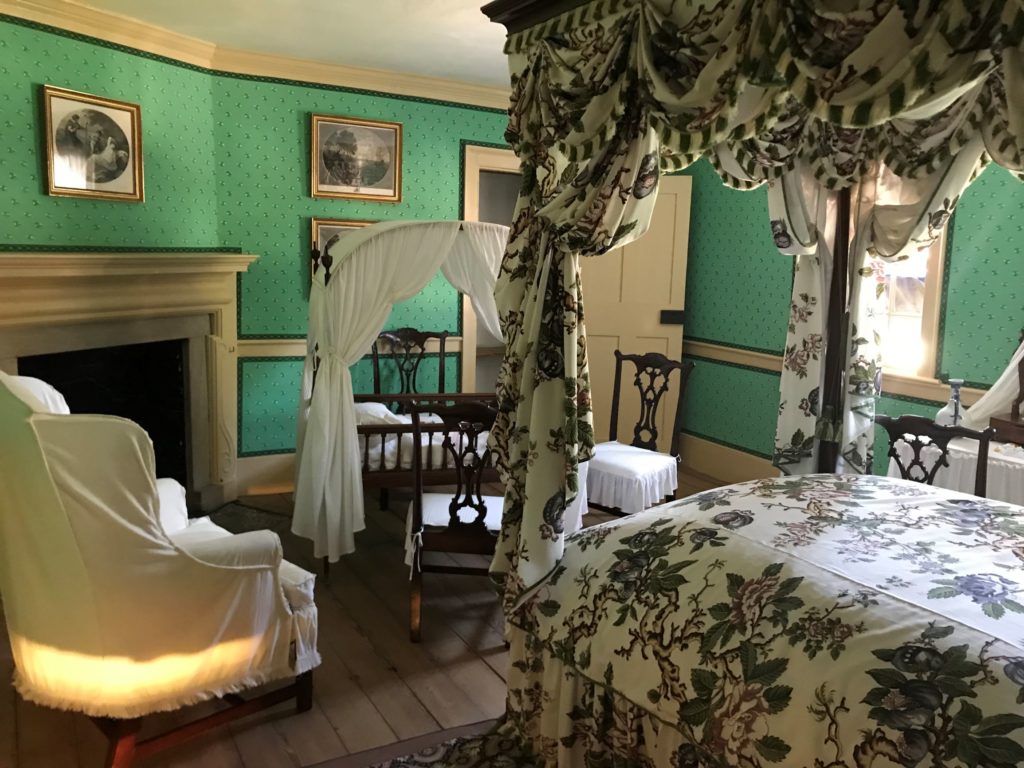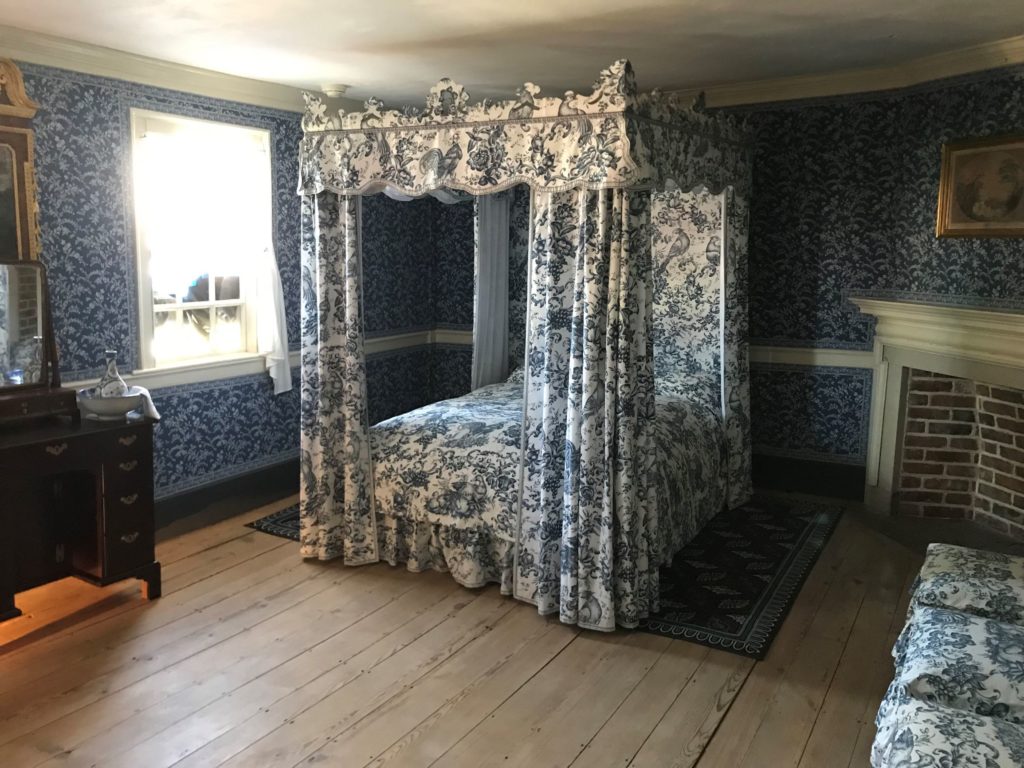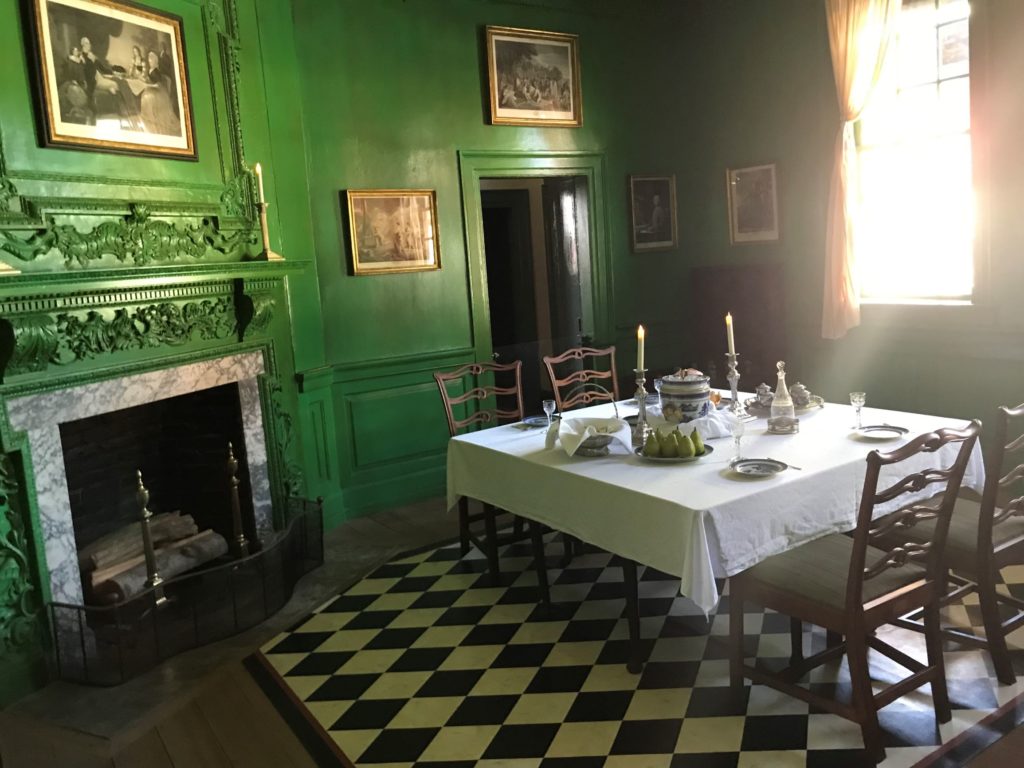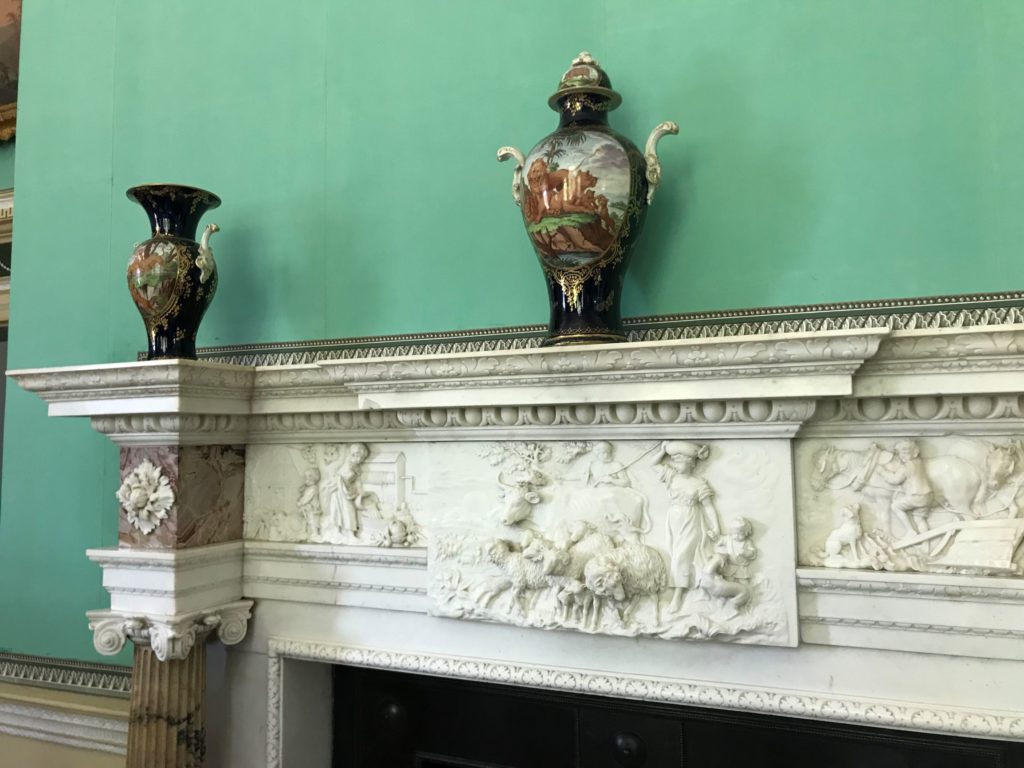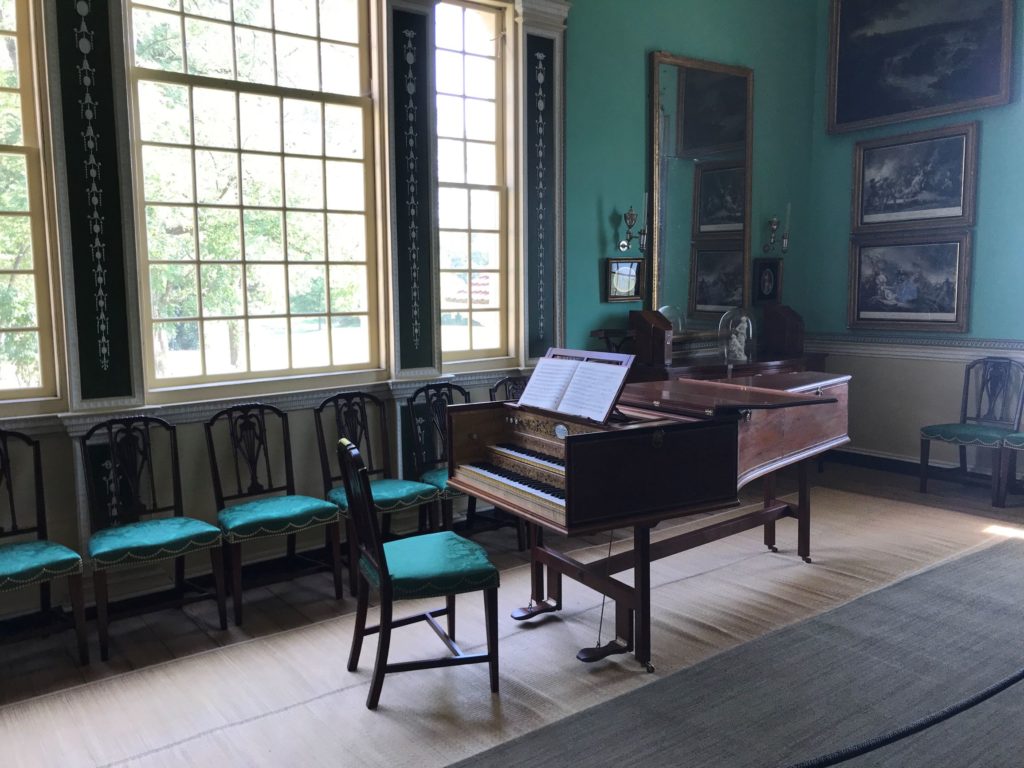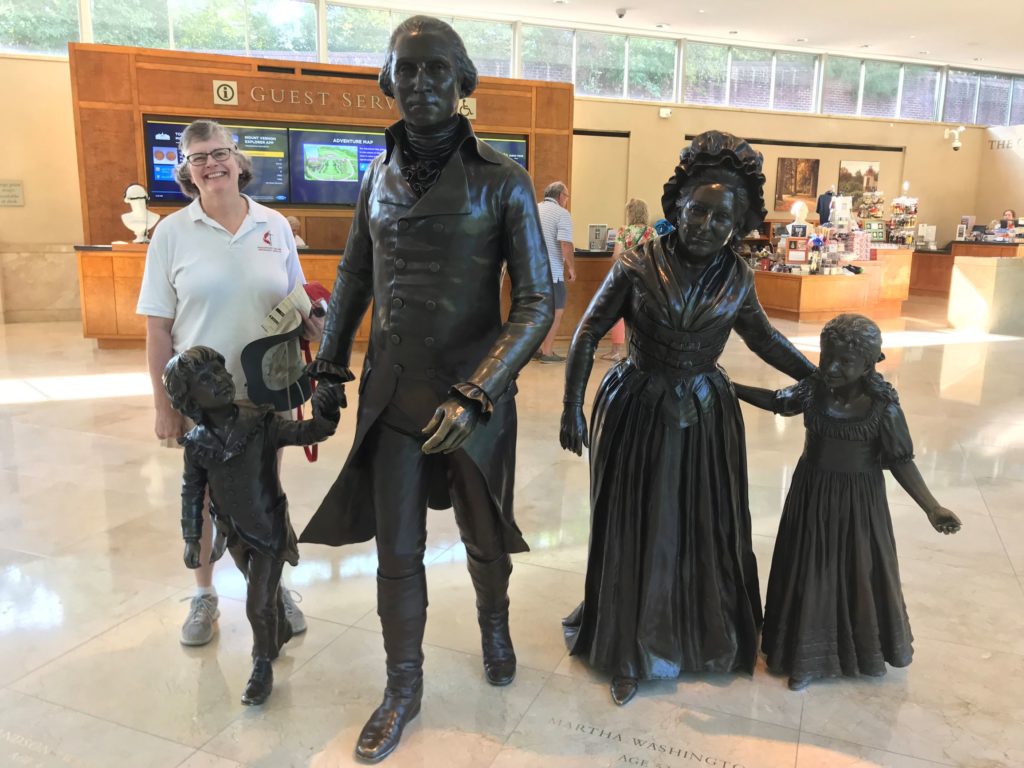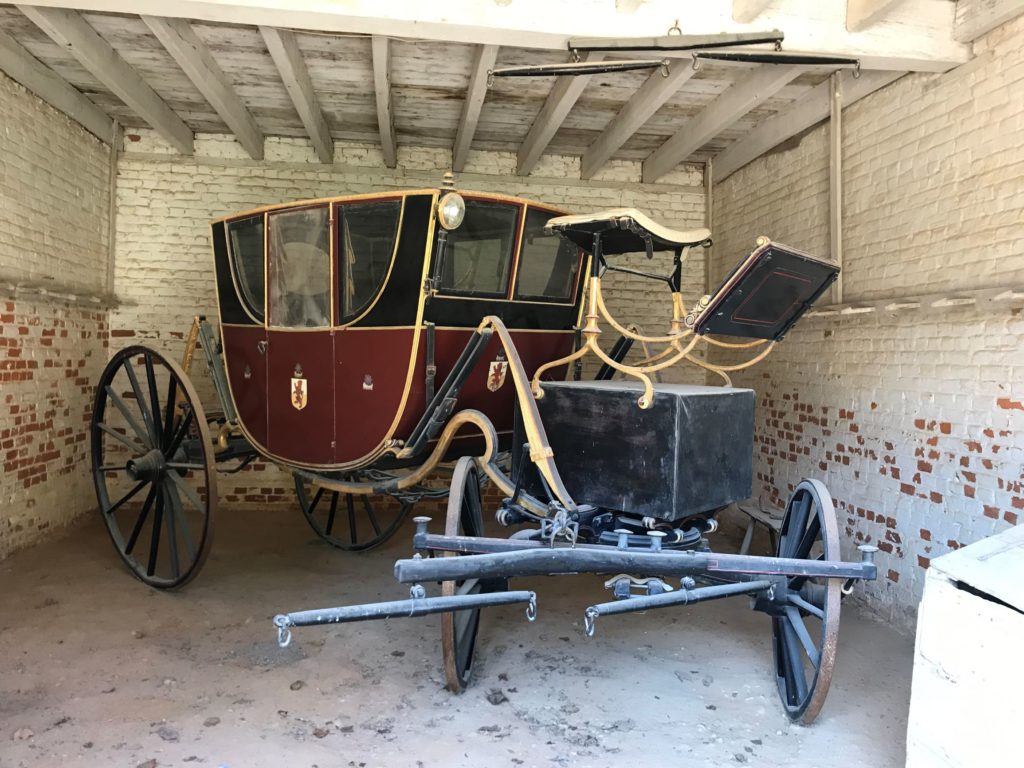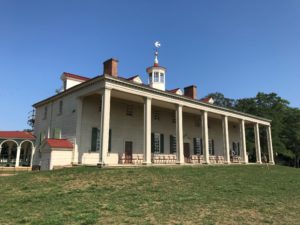
Tom and I spent the summer learning about and talking to people about George Washington. He was a very young man when he was at Fort Necessity, but he was already on his way to becoming chief among the Founding Fathers. While we were in Washington DC, we decided to go to Mount Vernon, the place he considered his home.
Mount Vernon, surprisingly enough, is not a National Park site. It is privately owned and operated by the Mount Vernon Ladies’ Association. There is an admission charge of $20 per person to enter, but once you pay that fee, everything is included.
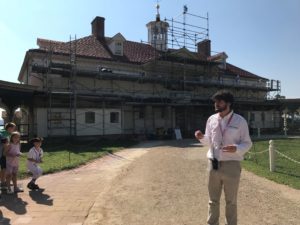
Everything includes quite a lot. When we first arrived, we were just in time to see the introductory film on the History of Mount Vernon. The original, small house was built by Augustine Washington, George’s father, in 1734. When Augustine died, the eldest son Lawrence inherited Mount Vernon. Lawrence died from tuberculosis when he was 33. The second son, Augustine Jr., declined to inherit the estate, and consequently it passed to George. George, with the help of Martha Custis Washington’s money, expanded the house twice, increasing it to the present 11,000 square feet.
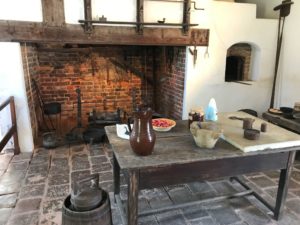
After we saw the introductory movie, we went on a tour of the house. We saw the large and gaudily colored public rooms and the plain, smaller private rooms. Because a new tour starts every five minutes, our tour guide really kept our group of 20 moving through the house. It did not, however, feel rushed. We saw the dining room, the seven guest rooms, and the Washington’s bedroom where George died. The final room on the tour was the separated kitchen, connected to the main house by a covered porch.
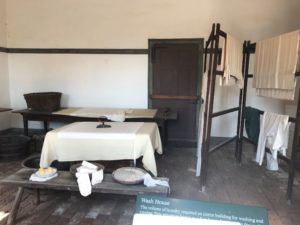
After seeing the house, we looked at its view of the Potomac River, then toured the outbuildings. We saw the Greenhouse, where fires were kept burning in the winter to force hot air through underground pipes. We walked through the kitchen garden and the formal gardens. Slave quarters are close to the main house, and enslaved people served as the skilled workers and the field hands on the plantation. George did not like slavery and freed all his slaves in his will, providing money for them to live on. Martha owned half the enslaved people on the estate, but when she died they reverted to the Custis family.
We saw the Spinning House, the Blacksmith Shop, the Shoemaker’s shop, and the necessary. After walking around the grounds we headed to the tombs of the Washington family. there was also a memorial to the enslaved people who built at and worked the plantation.
Although George was not an inventor like Thomas Jefferson, he was an innovative thinker who was always experimenting with new crops and tools. Although his father was a tobacco farmer, George wanted the plantation to be self-sustaining. So he planted crops that would feed the family and workers on the plantation. He rotated crops to preserve the soil and built a hexagonal threshing barn. Seeking to diversify, he built a gristmill a short distance from Mount Vernon and owned two other farms in the area.
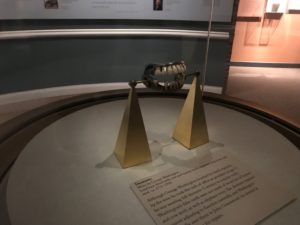
Once we finished touring the grounds, Tom and I headed in to the Museum. The museum followed George and Martha Washington’s lives chronologically. There was a section on the French and Indian War, as well as George’s time as a planter, a general, and a president. For me, the most fascinating object in the museum was George’s dentures. We also watched a “4D” movie about George’s time as the Commander in Chief of the Revolutionary War.
Mount Vernon was a fascinating place to visit, just as George Washington was a fascinating person. He loved being at Mount Vernon more than any other place and wished to give up his public life so he could retire in peace.

